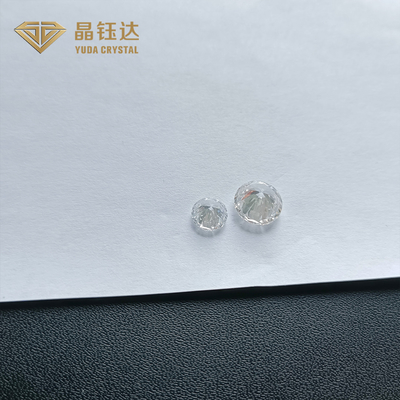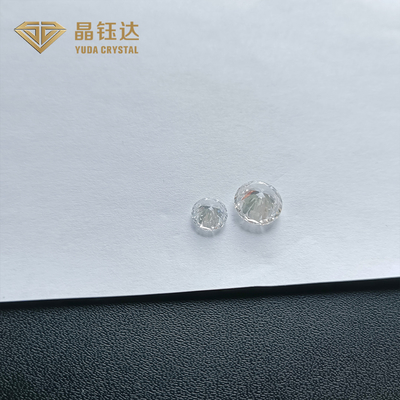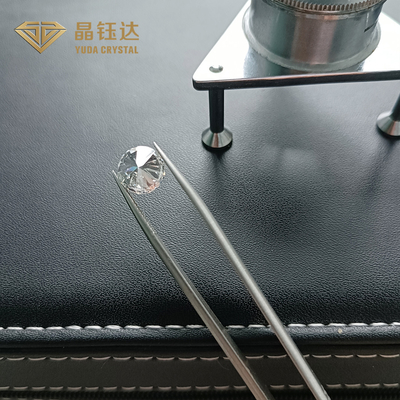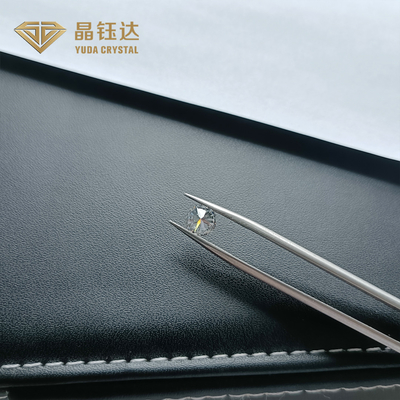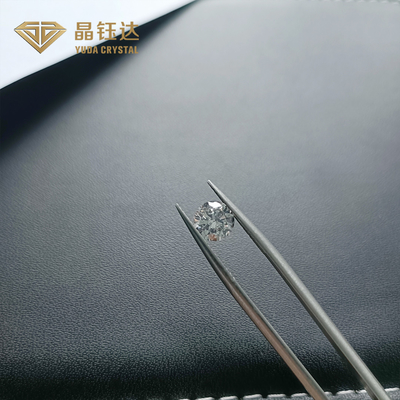VS SI Clarity 0.5-3.0ct Lab Grown HPHT Diamonds For Diamonds Jewelry
Lab Grown HPHT Diamonds Description
Diamonds are considered to be the hardest material in the world. Mohs hardness is divided into 10 grades, among which diamond is the highest grade. Since people knew that diamonds are made of pure carbon, more and more people began to study diamonds under high temperature and high pressure in the laboratory. At present, the diamond raw material industry in high temperature and high pressure laboratory has developed rapidly and is widely used in various industries and processing industries.
Although laboratory cultured diamonds have different environments and conditions from natural diamonds, both natural diamonds and laboratory diamonds are pure carbon crystals, and their physical properties, chemical properties, crystal structure and optical properties are the same. The diamonds cultivated in the laboratory and mined are real diamonds.
Synthetic diamond, which is often called laboratory diamond under high temperature and high pressure, is formed by imitating the crystallization process of natural diamond. Natural diamonds are formed in the natural environment and often mixed with other elements, which makes some natural diamonds not completely transparent and can show specific colors. For example, some have pink diamonds, some have a touch of blue, and some have light yellow. Diamonds grow under high temperature and pressure in the laboratory. Less impurities than natural diamonds, so it is more pure and transparent.
Synthetic diamond, which is often called laboratory diamond under high temperature and high pressure, is formed by imitating the crystallization process of natural diamond. Natural diamonds are formed in the natural environment and often mixed with other elements, which makes some natural diamonds not completely transparent and can show specific colors. For example, some have pink diamonds, some have a touch of blue, and some have light yellow. Diamonds grow under high temperature and pressure in the laboratory. Less impurities than natural diamonds, so it is more pure and transparent.
However, under natural conditions, high temperature and high pressure (HPHT) or chemical vapor deposition (CVD) technology can now be used to simulate the production of natural diamonds in the laboratory, and the gem grade diamonds produced in the laboratory can be produced in just a few weeks.
Parameters Of Lab Grown HPHT CVD Diamonds
| Product Name |
Synthetic (Lab created) Loose Diamond |
| Material |
Lab Grown Loose Diamond |
| Diamond Color |
DEF |
| Diamond Shape |
Round |
| Diamond Technology |
HPHT |
| Diamond Cut |
Very Good Cut |
| Payment Terms |
100% Payment In Advance |
| Diamond Carat Weight |
0.5CT-3CTS |
| Diamond Clarity |
VS SI |
| Shipping way |
DHL, FedEx, SF Express, UPS, EMS, TNT etc |
| M.O.Q |
Negotiable |
| Delivery Time |
1-7 Working Days Depends On Quantity |
| Payment Methods |
T/T, Western Union, PayPal, Bank Transfer |
| Used |
Diamonds Jewelry (necklace,ring,earring) |
| Application |
For Sale |
| Place Of Origin |
Zhengzhou, China |
Characteristics Of Lab Grown HPHT CVD Diamonds
The diamond cultivated in the laboratory is cultivated in the laboratory. People use advanced equipment to simulate the environment in which natural diamonds are formed. Diamonds produced in the laboratory are usually produced in the laboratory for several weeks. Natural diamonds are naturally formed and are the result of billions of years of high temperature and pressure. The chemical differences between the two are the same.
There is no significant difference between laboratory cultured diamond and natural diamond. Even professional gemologists need special equipment to identify them. Through amplification, professionals will be able to identify subtle differences in the growth and production of diamond inclusions in the laboratory.
| The Difference Between Lab Diamond And Natural Diamond |
| Attribute |
Lab-Created Diamonds |
Natural diamond |
Distinction |
| Chemical composition |
C(carbon) |
C(carbon) |
No |
| Refractive index |
2.42 |
2.42 |
No |
| Relative density |
3.52 |
3.52 |
No |
| Dispersion |
0.044 |
0.044 |
No |
| Hardness value |
90 GPA |
90 GPA |
No |
| Thermal conductivity |
2*103 W/M/K |
2*103 W/M/K |
No |
| Thermal property |
0.8*10-6 K |
0.8*10-6 K |
No |
| Light transmittance |
DEEP UV TO FAR TR |
DEEP UV TO FAR TR |
No |
|
Resistivity
|
1016 OHM-CM
|
1016 OHM-CM
|
No
|
|
Compressibility
|
8.3*10-13 M2/N
|
8.3*10-13 M2/N
|
No
|
From a scientific point of view, synthetic diamond and natural diamond exactly the same, the only difference is that the formation of their position.
Loose Lab Grown HPHT CVD Diamonds Details


 Your message must be between 20-3,000 characters!
Your message must be between 20-3,000 characters! Please check your E-mail!
Please check your E-mail!  Your message must be between 20-3,000 characters!
Your message must be between 20-3,000 characters! Please check your E-mail!
Please check your E-mail! 


